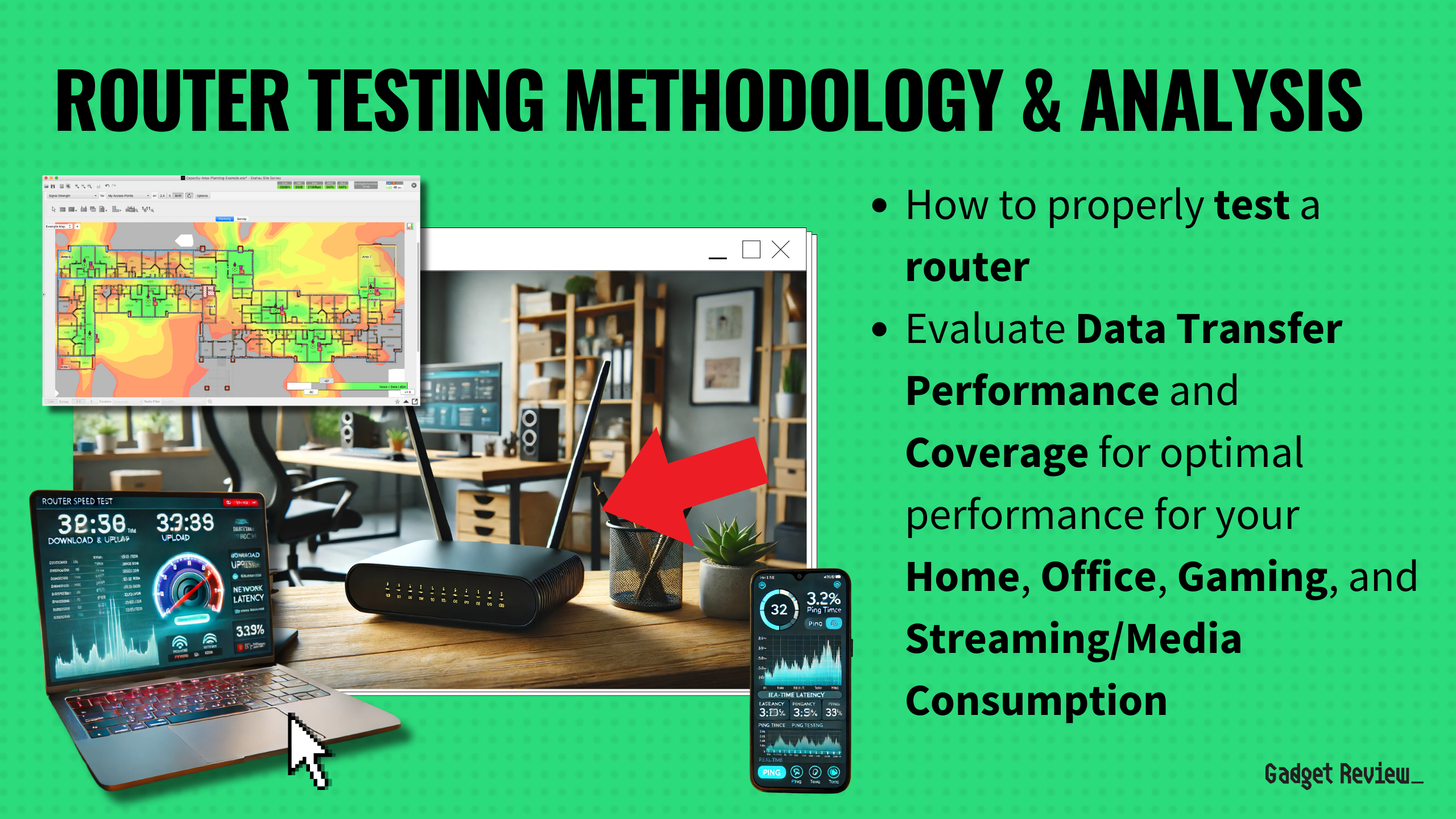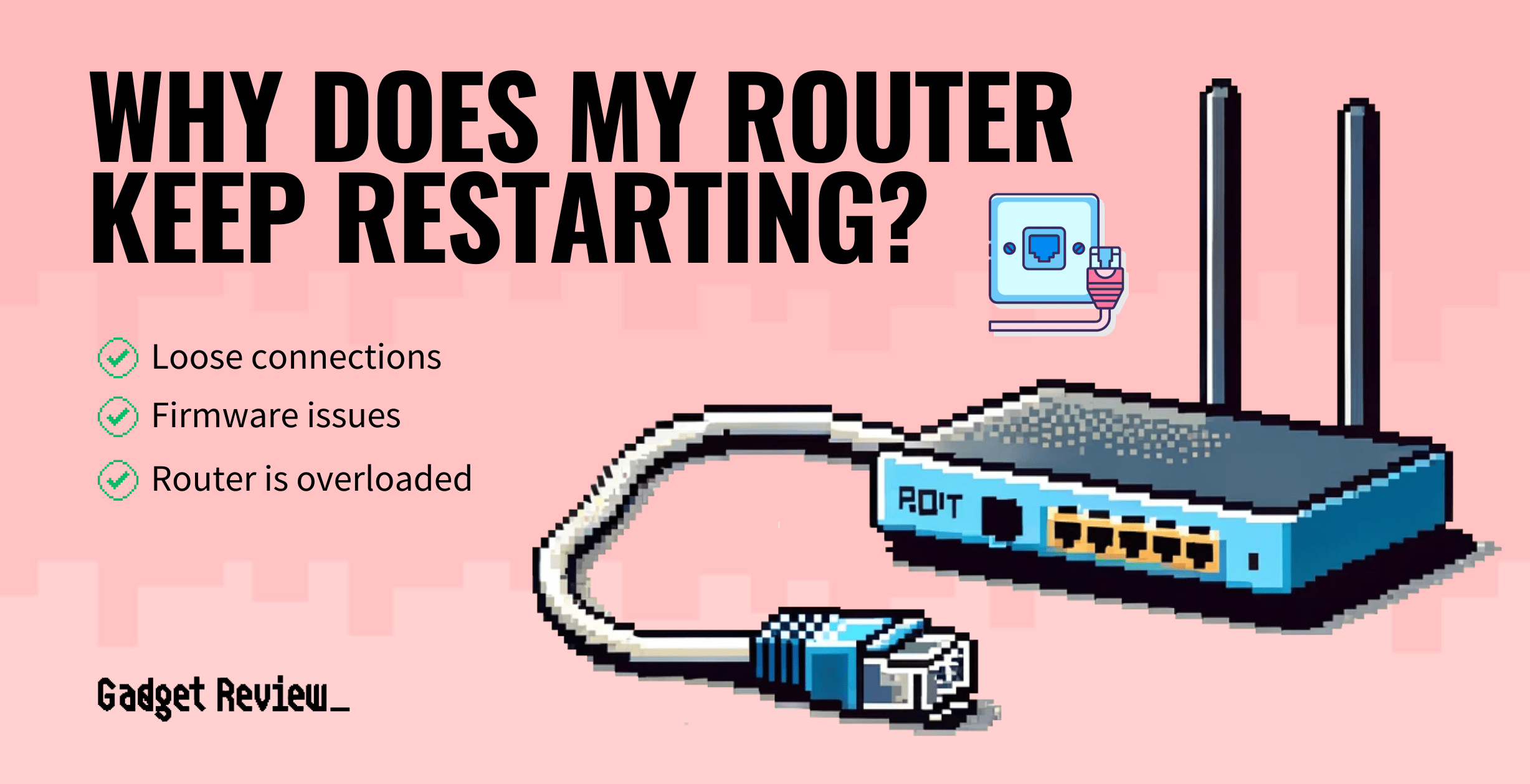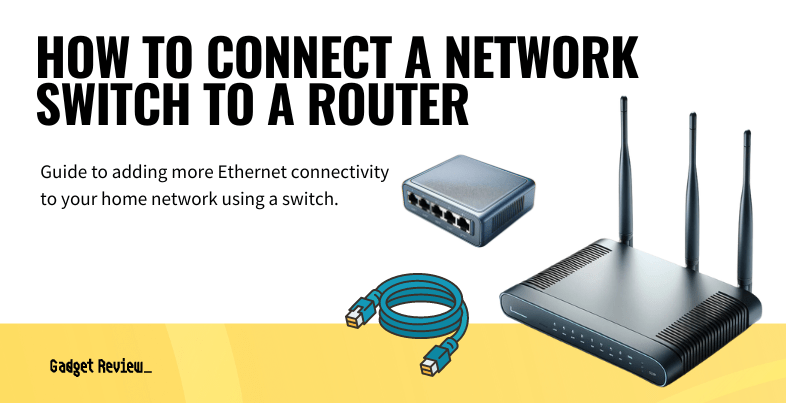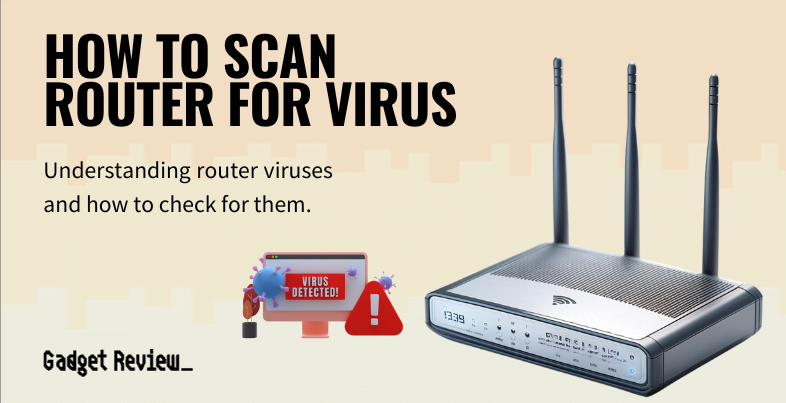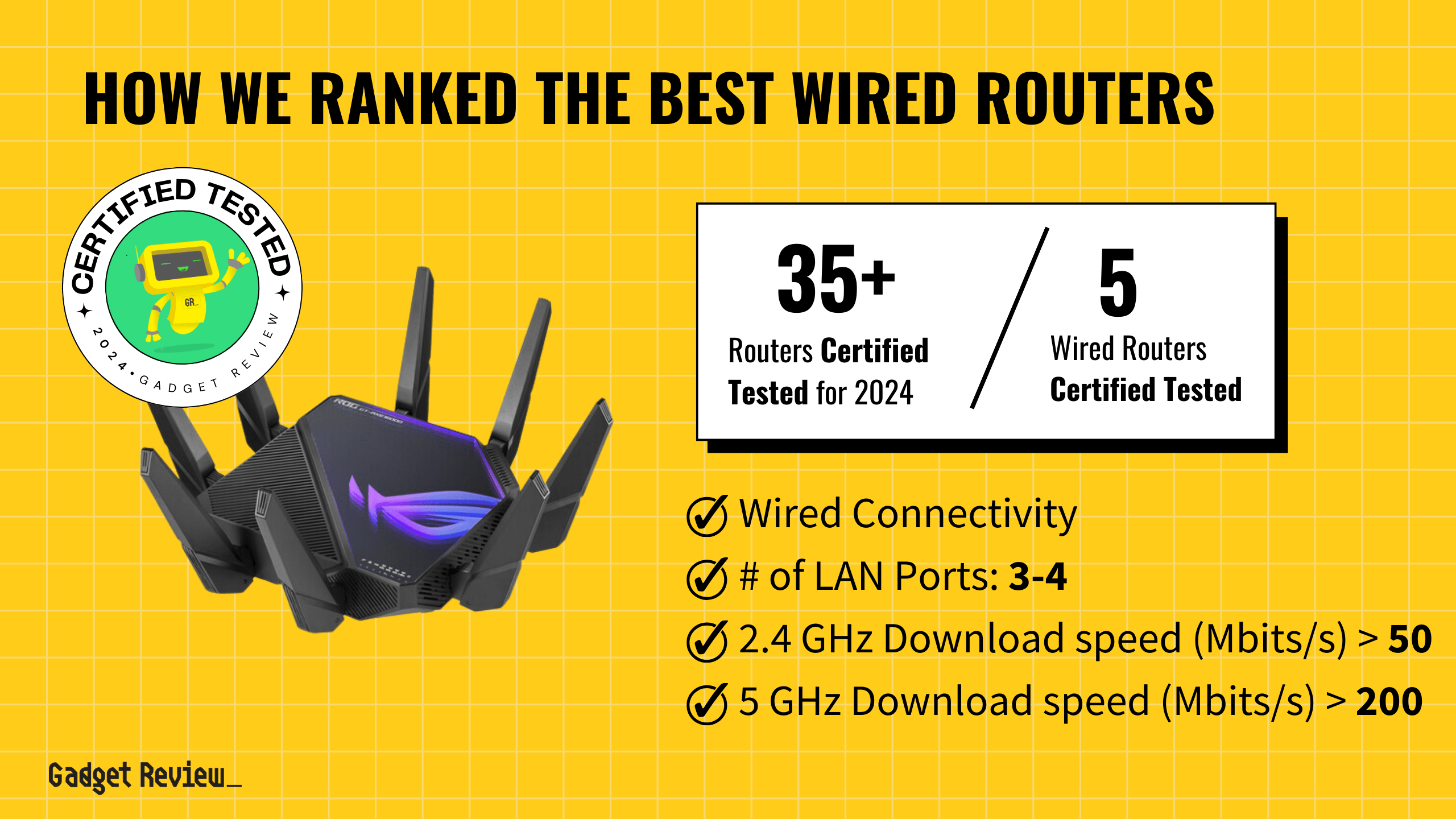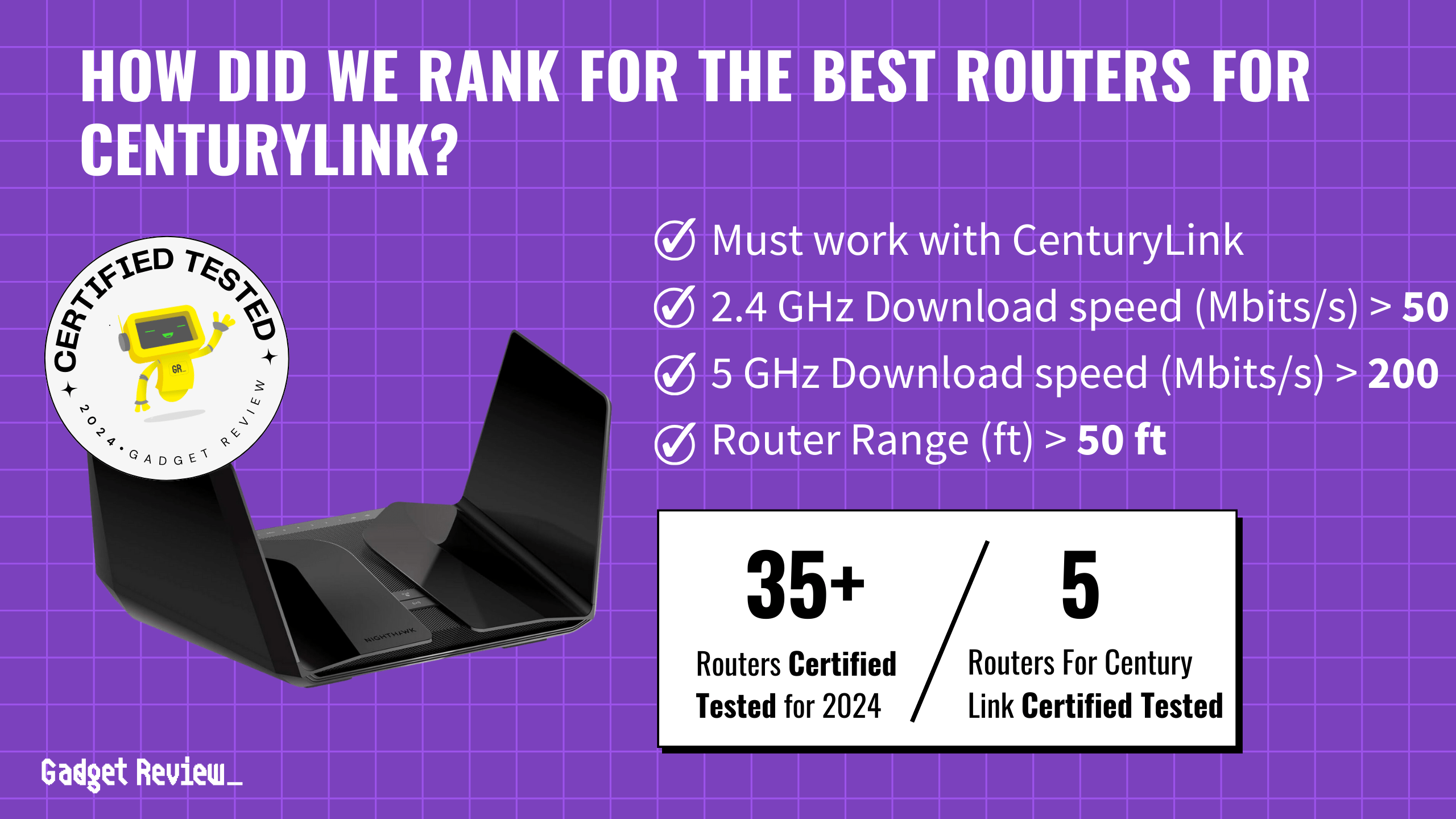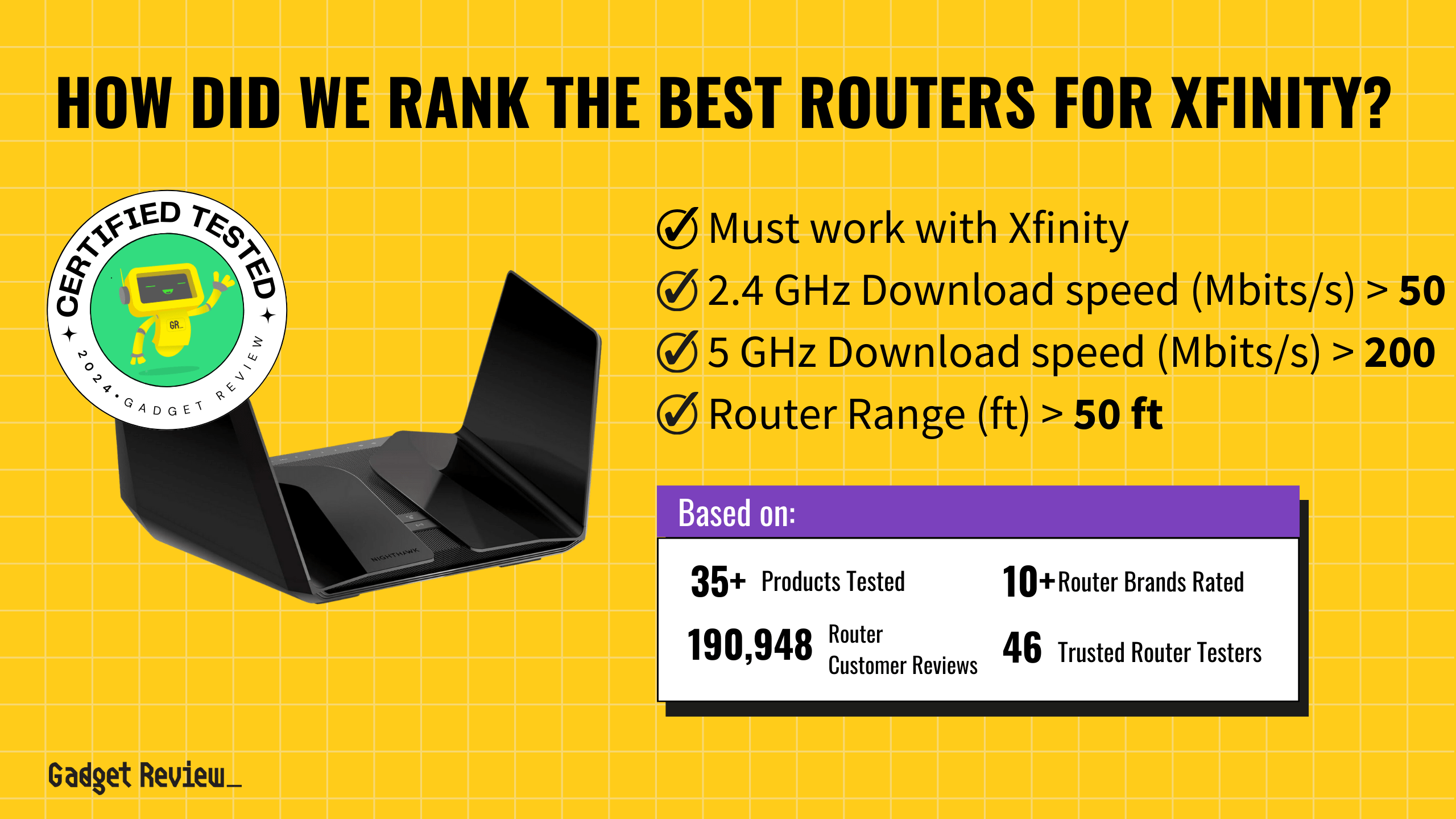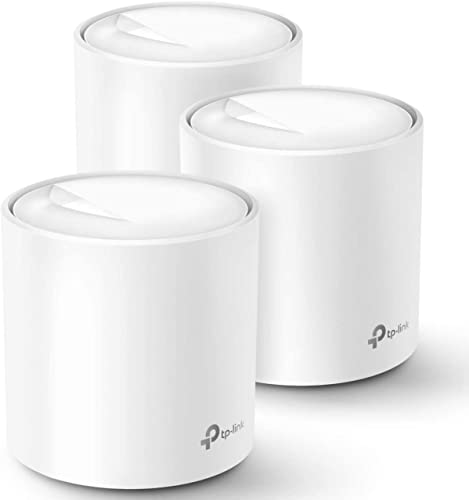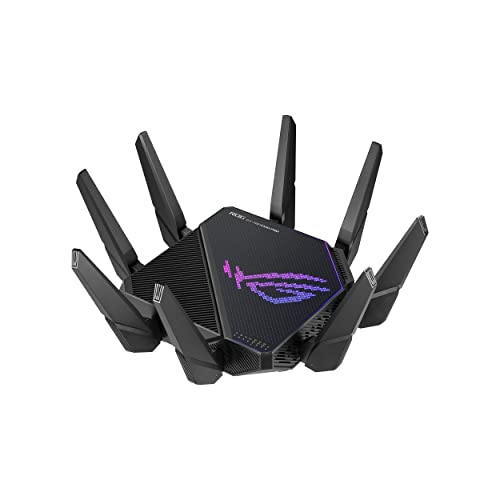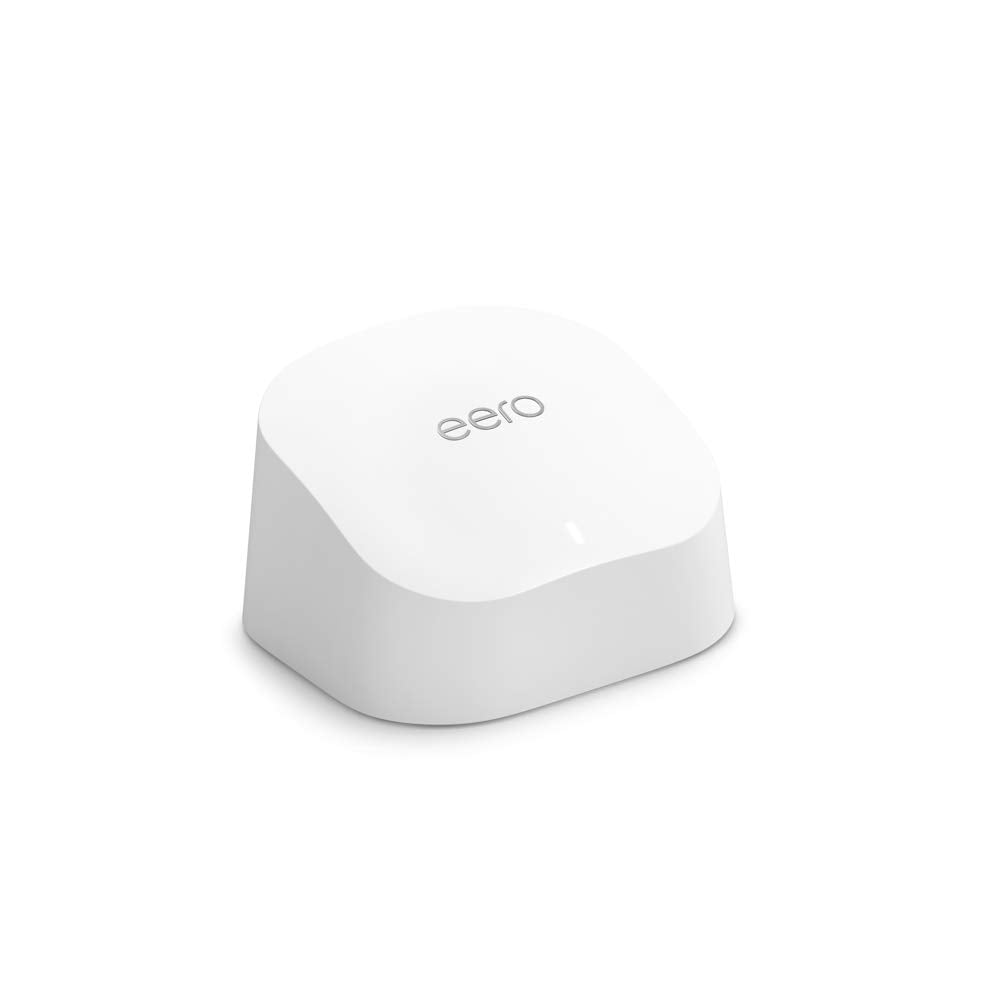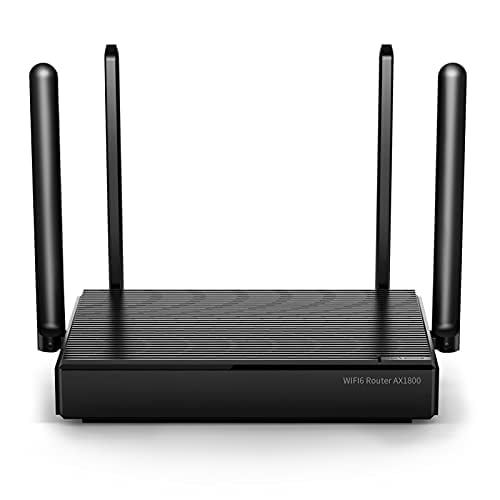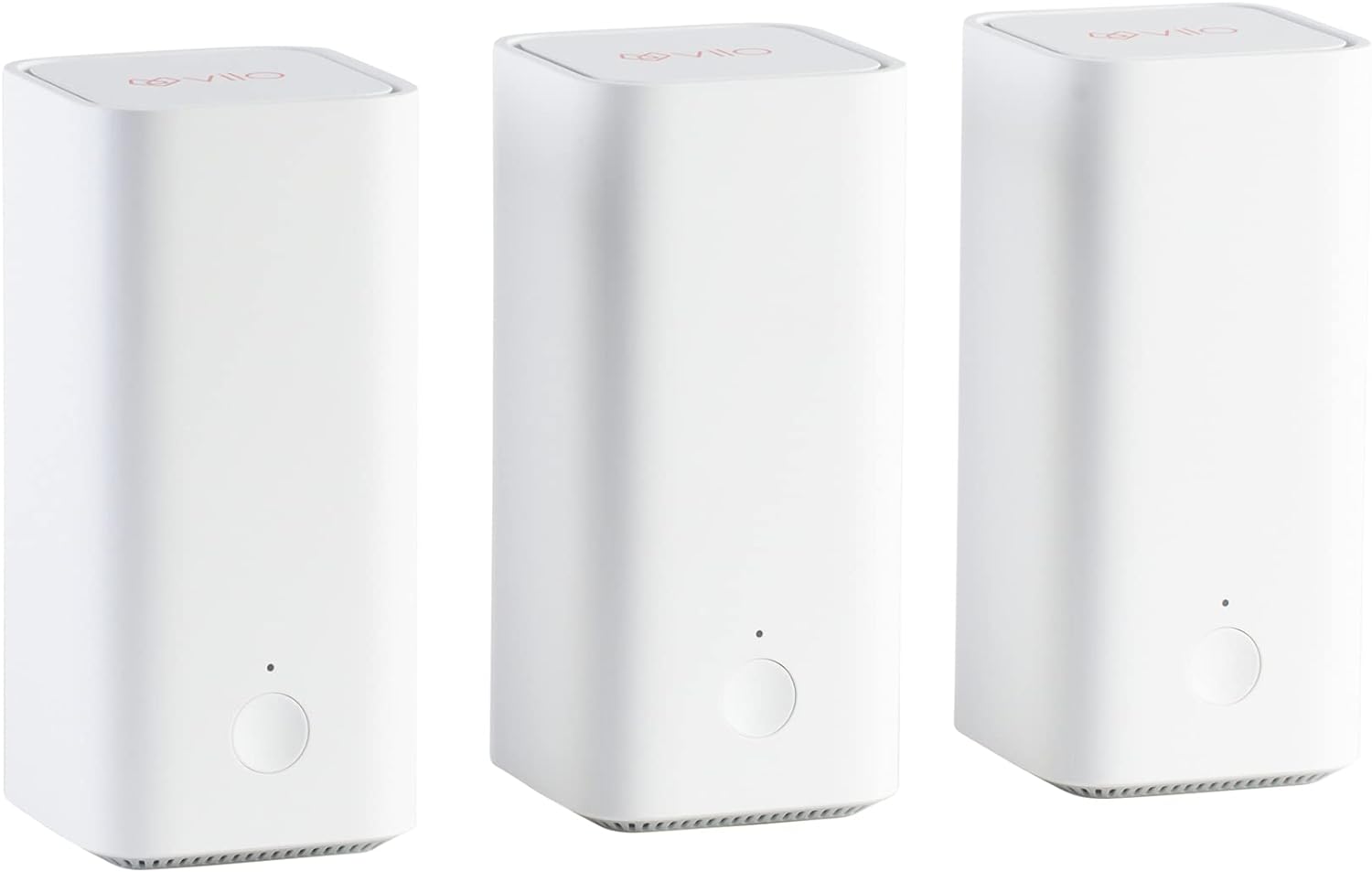When selecting a router for a small business, you need to consider specific features and performance metrics. Important factors include MU-MIMO support for handling multiple simultaneous connections, a 2.4 GHz download speed over 50 Mbps, and a 5 GHz download speed exceeding 200 Mbps. Low latency below 30ms and a range greater than 50 feet are also crucial.
Our buying guide features six routers that excelled in these areas. We analyzed 37 models, verifying their performance through 192,613 customer reviews. Our scientific True Score system certifies products as tested and filters out fake and low-quality reviews. The winning routers delivered top-tier performance, making them excellent routers for your small business needs.
How Did We Rank the Best Small Business Routers?
Crafting our buying guide for the best small business routers, we meticulously analyzed customer reviews, testing methodologies, and expert opinions across 200+ websites. This rigorous process helped us pinpoint 2 essential test results, 2 additional desirable test outcomes, and 1 critical specification. Our goal was to distill the vital information, focusing on what really counts to ensure your business runs smoothly with the most reliable router options available.
Our commitment to unbiased reviews is powered by our ‘True Score’ system, targeting low quality and fake reviews. When you shop through our links, you’re backing our mission. Dive deeper to see how.
Minimum Specifications
- Must Support MU-MIMO
Test Criteria
- 2.4 GHz Download Speed: A download speed on the 2.4 GHz band of at least 50 Mbits.
- 5 GHz Download Speed: A download speed on the 5 GHz band of at least 200 Mbits.
? “Nice To Haves”
- Router Range: A range of at least 50 feet before the signal from the router begins to become noticeably weaker.
- Latency: A latency of 30 ms or less.
Latest Updates
- 06/17/2024: Republished the list to include the best small business routers based on our True Score system.
Top Small Business Routers For 2025
Prices accurate at the time of publishing

Best Overall

Runner Up

Best Value

Best Budget

Best Mid-Range

Premium Pick
Netgear Nighthawk RAXE300
Best For Small Business
The Netgear Nighthawk RAXE300 delivers exceptional performance and extensive coverage for small businesses needing top-tier networking.
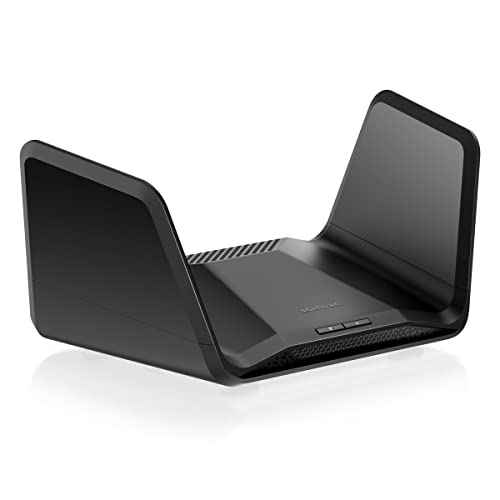
True Score
84829Experts
904kCustomers
Absolutely Fresh
 SAVE $135$299.99$164.99
SAVE $135$299.99$164.99Read More
Snapshot
Reasons to Buy
- Superb Wi-Fi speeds
- Wide range
- Simple setup
Reasons to Avoid
- Limited range (6GHz)
- No USB A port
- Subscription-based security solutions
Specifications

# of LAN Ports 6 
Frequency Bands 2.4 GHz, 5.0 GHz, 6.0 GHz 
MU-MIMO Support Yes 
Wireless Standard AC, AX, N 
Mesh System No 
Quality of Service Prioritization No 
# of Phone Ports 1 
# of WAN Ports 1 
App Compatible Yes 
Available Storage 256MB 
Band Technology Tri 
Data Encryption Type WPA-PSK, WPA2-PSK, WPA3 
Energy Star Certified No 
Integrated Modem No 
LAN Port Speed 4 Gb Ethernet 
Number of Antennas 6 
Parental Controls Yes 
Processor Cores Quad 
Processor Speed 1.7GHz 
WiFi Range 2500 sq.ft 
WiFi Speed 7.8 Gb 
Wired Speed 1000 Mb All Specs
Test Results
2.4 GHz Download speed (Mbits/s) 222 5 GHz Download speed (Mbits/s) 852 6 Ghz Download speed (Mbits/s) 757 Latency (ms) 5 Router Range (ft) 170 2.4 GHz Upload speed (Mbits/s) 0 5 GHz Upload speed (Mbits/s) 175 6 Ghz Upload speed (Mbits/s) 247 All Tests
All Retailers
- $164.99$300Save $135
- $186.19$218Save $32
- $189.99$399Save $209
- $299.99
Our Verdict
If your small business needs a solid all-around networking solution, the Netgear Nighthawk RAXE300 is a fantastic choice without paying a premium. Its exceptional performance and extensive coverage capabilities ensure that connectivity remains robust and dependable even across large office spaces. The ability of this router to uphold a steady signal up to 170 feet away without a dip in speed is a significant boon for businesses spread over considerable areas. Offering download speeds of up to 851.6 Mbits/s on the 5 GHz band and 756.8 Mbits/s on the 6 GHz band, it ensures that even the most remote sections of your business environment are seamlessly integrated into high-speed internet connectivity.
The Nighthawk RAXE300’s support for the 2.4 GHz band, providing download speeds of 221.65 Mbits/s, ensures that even legacy business devices not compatible with higher frequency bands can benefit from efficient connectivity. This feature is crucial for small businesses that may utilize a mix of old and new technology.
The router’s advanced features, including MU-MIMO support, are ideal for small businesses. These technologies adeptly manage network traffic to uphold performance and speed, which is essential for maintaining productivity when numerous devices are connected simultaneously. Coupled with strong encryption standards and a low latency of 5 ms, lower than the Asus ROG GT6 Mesh’s 22 ms, this router provides a secure and seamless online experience essential for the smooth operation of any small business.
The Netgear Nighthawk RAXE300 is a versatile networking device tailored to small businesses’ needs. It offers wide coverage, sustained high performance across distances, and a reliable and fast internet connection throughout the workspace.
Read Less

Best Overall

Runner Up

Best Value

Best Budget

Best Mid-Range

Premium Pick
Asus ROG GT6 Mesh
Best For Gaming
The Asus ROG GT6 Mesh router offers exceptional performance and comprehensive features for small businesses with heavy device usage.

True Score
82826Experts
864kCustomers
Absolutely Fresh
 SAVE $35$349.99$314.99
SAVE $35$349.99$314.99Read More
Snapshot
Reasons to Buy
- Fast Download/Upload Speed
- Easy to install and operate
Reasons to Avoid
- WiFi speed drops off at long range
- Connection range is limited
- Limited USB Connectivity
- Mediocre Latency
Specifications

# of LAN Ports 3 
Frequency Bands 2.4 GHz, 5.0 GHz 
MU-MIMO Support Yes 
Wireless Standard AC, AX, N 
Mesh System Yes 
Quality of Service Prioritization Yes 
# of Phone Ports n/a 
# of WAN Ports 1 
App Compatible Yes 
Available Storage 256MB 
Band Technology Tri 
Data Encryption Type WEP, WPA-Enterprise, WPA-PSK, WPA2-Enterprise, WPA3-Personal 
Energy Star Certified No 
Integrated Modem No 
LAN Port Speed 3 Gb Ethernet 
Number of Antennas 9 
Parental Controls Yes 
Processor Cores Triple 
Processor Speed 1.7GHz 
WiFi Range 5800 sq. ft 
WiFi Speed 2.6 Gb 
Wired Speed 2500 Mb All Specs
Test Results
2.4 GHz Download speed (Mbits/s) 139 5 GHz Download speed (Mbits/s) 701 6 Ghz Download speed (Mbits/s) 0 Latency (ms) 22 Router Range (ft) 95 2.4 GHz Upload speed (Mbits/s) 112 5 GHz Upload speed (Mbits/s) 619 6 Ghz Upload speed (Mbits/s) 0 All Tests
All Retailers
- $314.99$350Save $35
- $335.99$350Save $14
Our Verdict
If your small business has many devices connected simultaneously, the Asus ROG GT6 Mesh router offers an exceptional solution. Its standout 5 GHz download and upload speeds of 701.3 and 618.5 Mbits/s, respectively, facilitate smooth video conferencing and seamless online interactions, crucial for businesses relying on digital communication. The router’s 2.4 GHz download speed of 139.35 Mbits/s effectively supports day-to-day online activities, ensuring that operations such as web browsing, email, and cloud-based applications run without interruption.
This router’s low latency of 22 ms benefits businesses requiring real-time data exchange, providing almost instantaneous response times that are essential for applications such as real-time collaboration tools. However, the Eero Max 7 has an impressively low 7 ms for lower latency. The Asus ROG GT6 Mesh’s adaptability extends to providing comprehensive coverage through its mesh system support, which is ideal for small businesses operating over large areas or multiple floors. This ensures that no area is left without a stable connection.
Another significant advantage is the quality of service prioritization feature, which allows the router to allocate bandwidth efficiently to high-priority tasks. Thus, critical business operations such as VoIP calls and large file uploads don’t suffer due to bandwidth competition. Additionally, features like data encryption and MU-MIMO support secure the network against potential threats and enhance the router’s capacity to handle multiple devices efficiently, an essential aspect for businesses with many connected devices.
Given its robust performance and range of advanced features, the Asus ROG GT6 Mesh is ideal for business solutions and excels for gaming and everyday uses. It offers small businesses a reliable, high-performance networking tool that supports many business activities, from high-definition video conferencing to secure and efficient multi-device connectivity.
Read Less

Best Overall

Runner Up

Best Value

Best Budget

Best Mid-Range

Premium Pick
Eero Max 7
Best For Mesh
For small businesses needing top-tier performance and management, the Eero Max 7 tri-band router is a standout choice with broad coverage and advanced features.
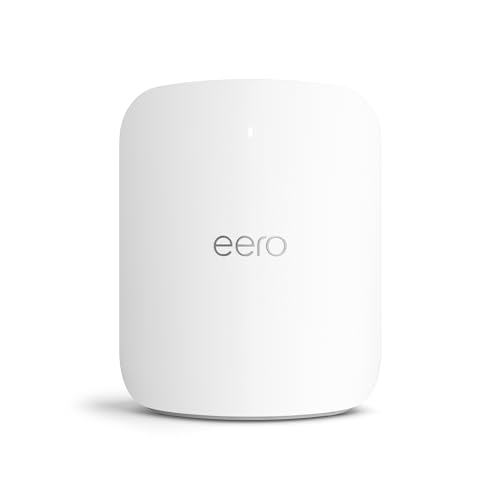
True Score
81807Experts
87944Customers
Absolutely Fresh
 SAVE $180$599.99$419.99
SAVE $180$599.99$419.99Read More
Snapshot
Reasons to Buy
- Exceptional Download WiFi Speed
- Easy Installation and Configuration
- Low Latency
Reasons to Avoid
- Poor 2.4 GHz Upload Speeds
- Short Range of Coverage
- Limited Port Space
Specifications

# of LAN Ports 4 
Frequency Bands 2.4 GHz, 5.0 GHz, 6.0 GHz 
MU-MIMO Support Yes 
Wireless Standard BE 
Mesh System Yes 
Quality of Service Prioritization No 
# of Phone Ports n/a 
# of WAN Ports 1 
App Compatible Yes 
Available Storage 4000MB 
Band Technology Tri 
Data Encryption Type WPA2-Personal, WPA3-Personal 
Energy Star Certified No 
Integrated Modem No 
LAN Port Speed 2 Gb Ethernet 
Number of Antennas 10 
Parental Controls Yes 
Processor Cores Quad 
Processor Speed – 
WiFi Range 2500 sq.ft 
WiFi Speed 4.3 Gb 
Wired Speed 10000 Mb All Specs
Test Results
2.4 GHz Download speed (Mbits/s) 96 5 GHz Download speed (Mbits/s) 1,078 6 Ghz Download speed (Mbits/s) 1,223 Latency (ms) 7 Router Range (ft) 90 2.4 GHz Upload speed (Mbits/s) 75 5 GHz Upload speed (Mbits/s) 411 6 Ghz Upload speed (Mbits/s) 638 All Tests
All Retailers
- $419.99$600Save $180
- $419.99$600Save $180
- $419.99$600Save $180
Our Verdict
If you’re small business needs a tri-band router that balances high performance with advanced management features, the Eero Max 7 is a noteworthy choice. Its mesh system support ensures wide-reaching coverage across the entire business premises, which is crucial for maintaining strong connectivity in every office or workspace. This extensive coverage, combined with the router’s advanced data encryption and quality of service prioritization, provides a secure and efficient networking environment, allowing critical business operations to receive the necessary bandwidth without interruption.
The Eero Max 7’s performance is equally impressive for a business setting. It boasts a 5 GHz download speed of 1078.5 Mbits/s and upload speeds of 410.6 Mbits/s. This high-speed capability is essential for businesses that rely heavily on cloud-based services, high-definition video conferencing, and large data transfers, ensuring these activities proceed smoothly without lag or buffering. The router’s low latency of 7 ms, only beaten by the 5ms of the Netgear Nighthawk RAXE300, further supports these real-time applications, providing a seamless and responsive experience.
Moreover, the Eero Max 7 stands out with its 6 GHz band capabilities, achieving download speeds of 1222.5 Mbits/s and upload speeds of 638 Mbits/s. This ensures the router is an excellent option for small businesses looking to stay ahead with the latest high-speed connectivity, supporting emerging technologies and the increasing demands of modern business operations.
With its combination of extensive coverage, advanced security features, and high-speed performance across multiple bands, the Eero Max 7 offers small businesses a robust and versatile networking solution. It ensures that all business areas are well-connected and provides the tools needed to manage and prioritize network traffic effectively, making it a solid foundation for any small business looking to optimize its digital infrastructure.
Read Less
Did you know 64% of router reviewers are untrustworthy?
Our research found only 46 of 127 router reviewers as of December 2025 can be trusted. This is why Gadget Review is committed to calculating the most accurate product scores on the web.
To do this, we give every router review site a Trust Rating, which measures how trustworthy the site and their testing claims are. We then leverage AI & a machine learning model to combine and calculate the Trust Rating with data from experts and consumers to deliver the True Score, the web’s most accurate product quality rating.
 192,613
192,613Router Reviews Analyzed

37
Total Products Analyzed

Best Overall

Runner Up

Best Value

Best Budget

Best Mid-Range

Premium Pick
TP-Link Archer AXE75
Best For Wired
This affordable TP-Link Archer AXE75 is ideal for budget-conscious small businesses. It offers excellent performance and security features.
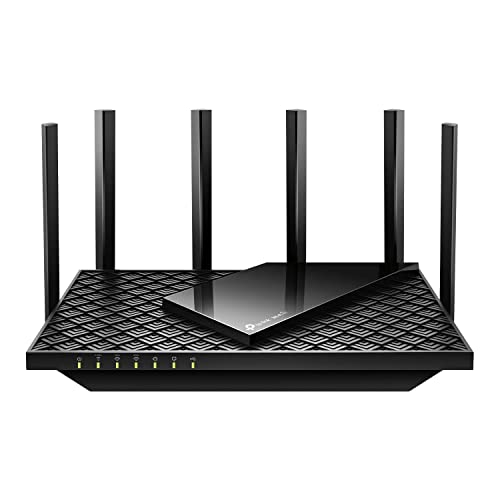
True Score
80794Experts
852kCustomers
Absolutely Fresh
 SAVE $84$199.99$116.00
SAVE $84$199.99$116.00Read More
Snapshot
Reasons to Buy
- Good WiFi speeds
- Adequate range
- Simple set up
Reasons to Avoid
- Average download speeds
- Limited coverage
- Subscription-based security solutions
Specifications

# of LAN Ports 4 
Frequency Bands 2.4 GHz, 5.0 GHz, 6.0 GHz 
MU-MIMO Support Yes 
Wireless Standard AC, AX 
Mesh System Yes 
Quality of Service Prioritization Yes 
# of Phone Ports n/a 
# of WAN Ports 1 
App Compatible Yes 
Available Storage n/a 
Band Technology Tri 
Data Encryption Type WPA3 
Energy Star Certified n/a 
Integrated Modem No 
LAN Port Speed Gigabit Ethernet 
Number of Antennas 6 
Parental Controls Yes 
Processor Cores Triple 
Processor Speed 1.7GHz 
WiFi Range 2500 sq.ft 
WiFi Speed 2.4GHz 
Wired Speed 1000 Mb All Specs
Test Results
2.4 GHz Download speed (Mbits/s) 65 5 GHz Download speed (Mbits/s) 309 6 Ghz Download speed (Mbits/s) 318 Latency (ms) 9 Router Range (ft) 60 2.4 GHz Upload speed (Mbits/s) 0 5 GHz Upload speed (Mbits/s) 0 6 Ghz Upload speed (Mbits/s) 0 All Tests
All Retailers
- $116.00$200Save $84
- $116.00$180Save $64
- $159.00
Our Verdict
For small businesses on a budget seeking a tri-band router that doesn’t compromise on performance and security, the TP-Link Archer AXE75 is a compelling option. The router’s performance credentials are equally suited to a small business environment, with a 2.4 GHz download speed of 65.05 Mbits/s, a 5 GHz download speed of 309.1 Mbits/s, and a 6 GHz download speed of 317.9 Mbits/s. However, if you don’t need the 6 GHz band, the TP-Link Archer AX55 offers improved speeds as a dual-band router. These speeds, coupled with an impressively low latency of just 9 ms—faster than many competitors—ensure a smooth and responsive online experience, essential for operations such as VoIP communications, cloud services, and real-time collaboration tools.
The router’s advanced data encryption capabilities provide the robust security small businesses require to protect sensitive data and maintain client confidentiality. Additionally, the quality of service (QoS) prioritization allows for the efficient allocation of bandwidth to high-priority tasks, ensuring that critical business applications run without disruption, even during peak usage times. Its compatibility with various management apps and support for MU-MIMO technology further enhances its appeal by facilitating easy network setup and allowing multiple devices to connect simultaneously without sacrificing speed or reliability.
The TP-Link Archer AXE75 is a versatile networking solution that meets the diverse needs of small businesses. Its combination of reliable connectivity, network security, and efficient bandwidth management, all at a budget-friendly price point, makes it an excellent choice for small business owners looking to establish a robust and secure network infrastructure without breaking the bank.
Read Less

DON’T SEE WHAT YOU’RE LOOKING FOR?
When selecting a network device, consider opting for the finest OpenWRT router for extensive customization options, particularly beneficial for tech-savvy users. For those frequently on the move, the best travel router ensures reliable connectivity during trips, offering compact and portable solutions.
Businesses might prefer a business router over a home router due to enhanced security features, better performance, and scalability. Additionally, a VoIP router is essential for businesses relying on internet-based phone systems, ensuring clear and uninterrupted communication.

Best Overall

Runner Up

Best Value

Best Budget

Best Mid-Range

Premium Pick
TP-Link Archer AX55
Best For Vpn
For expansive Wi-Fi coverage in small businesses, the TP-Link Archer AX55 excels with robust performance and tailored features.
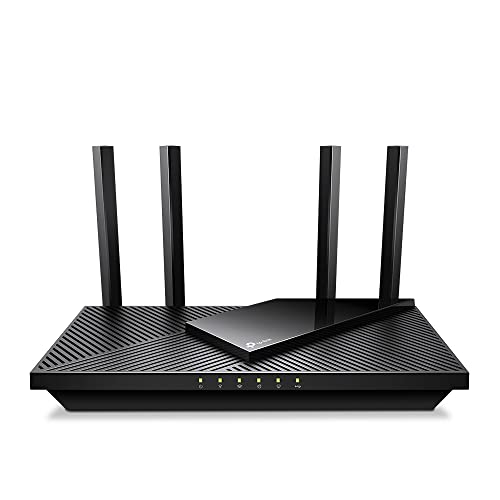
True Score
80793Experts
856kCustomers
Absolutely Fresh
 SAVE $221$298.64$77.90
SAVE $221$298.64$77.90Read More
Snapshot
Reasons to Buy
- Good Download/Upload Speed
- Great Connection Range
- Simple Setup and Easy Configuration
Reasons to Avoid
- Slow 2.4 GHz Upload Speed
- High Latency
- Limited Ports
Specifications

# of LAN Ports – 
Frequency Bands – 
MU-MIMO Support – 
Wireless Standard – 
Mesh System – 
Quality of Service Prioritization – 
# of Phone Ports – 
# of WAN Ports – 
App Compatible – 
Available Storage – 
Band Technology – 
Data Encryption Type – 
Energy Star Certified – 
Integrated Modem – 
LAN Port Speed – 
Number of Antennas – 
Parental Controls – 
Processor Cores – 
Processor Speed – 
WiFi Range – 
WiFi Speed – 
Wired Speed – All Specs
Test Results
2.4 GHz Download speed (Mbits/s) 99 5 GHz Download speed (Mbits/s) 485 6 Ghz Download speed (Mbits/s) 0 Latency (ms) 0 Router Range (ft) 120 2.4 GHz Upload speed (Mbits/s) 54 5 GHz Upload speed (Mbits/s) 745 6 Ghz Upload speed (Mbits/s) 0 All Tests
All Retailers
- $77.90$299Save $221
- $79.99$100Save $20
Our Verdict
For small businesses needing a router that delivers expansive Wi-Fi coverage, the TP-Link Archer AX55 is an exceptional choice. Its Router Range extends up to 120 feet, making it ideally suited for businesses operating in larger spaces where stable and widespread Wi-Fi access is necessary. The router’s 2.4 GHz Download speed of 98.64 Mbits/s ensures that the internet connection remains reliable and swift even at extended distances, a crucial factor for maintaining productivity in a business setting.
The Archer AX55 also excels with its impressive 5 GHz Upload speed of 744.7 Mbits/s, coupled with a download speed of 485.2 Mbits/s, providing ample bandwidth for high-demand activities such as video conferencing, large file transfers, and cloud-based applications which are common in business environments. However, if you need faster download speeds and don’t mind sacrificing some upload speed, the Asus ROG GT6 Mesh is an excellent alternative, although at a higher cost as well. The router’s MU-MIMO support is particularly beneficial for small businesses, allowing multiple devices to connect simultaneously without a loss in performance, thus ensuring efficient network usage during peak business hours.
Beyond its range and speed capabilities, the Archer AX55 has advanced features such as Quality of Service (QoS) prioritization, app compatibility for easy management, and robust data encryption. These features are tailored to small businesses’ versatile needs, offering extended coverage, prioritizing security, and seamless network management.
The TP-Link Archer AX55’s combination of long-range coverage, high-speed performance, and business-oriented features make it a versatile and reliable choice for small businesses seeking a high-quality networking solution. Its ability to support various business applications underscores its suitability for a professional setting where network reliability and security are paramount.
Read Less
Category Snapshot
Routers
- Total Brands/Products Tested
12 Brands, 37 Products
- Top 2 Brands
Netgear, Asus
- Price Range (Budget-Premium)
$45-$600
- Average True Score
79.42
- Important Test Criteria
Download & Upload Speed (bits/second)
Range (feet/meters)
- Most Trusted Testers

- Top Router Experts
- Typical Warranty
1 year
- Covered by Insurance
Yes – AKKO

Best Overall

Runner Up

Best Value

Best Budget

Best Mid-Range

Premium Pick
Eero Pro 6E
Best For Fiber Optic
For small businesses seeking reliable connectivity, the Eero Pro 6E offers impressive speeds and comprehensive coverage, making it an excellent mid-range choice.
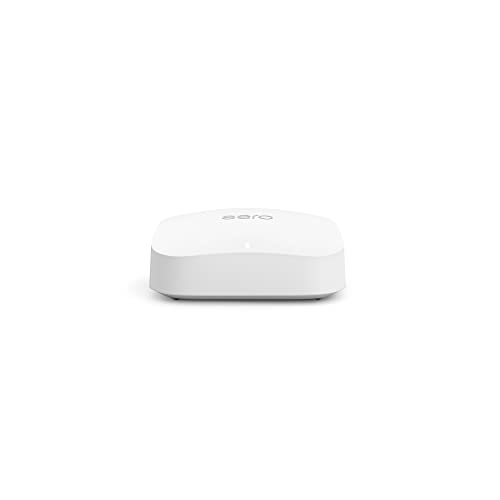
True Score
807812Experts
854kCustomers
Absolutely Fresh
 SAVE $90$249.99$159.99
SAVE $90$249.99$159.99Read More
Snapshot
Reasons to Buy
- Good throughput speeds
- Good coverage
- Good smart device support
Reasons to Avoid
- Lacks included security and parental control features
- Not as consistent as some WiFi 6E routers
- Limited wired connectivity
Specifications

# of LAN Ports 1 
Frequency Bands 2.4 GHz, 5.0 GHz, 6.0 GHz 
MU-MIMO Support Yes 
Wireless Standard AC, AX, N 
Mesh System Yes 
Quality of Service Prioritization n/a 
# of Phone Ports n/a 
# of WAN Ports 1 
App Compatible Yes 
Available Storage 4000MB 
Band Technology Tri 
Data Encryption Type WPA2-PSK, WPA3-Personal 
Energy Star Certified No 
Integrated Modem No 
LAN Port Speed 1 Gb Ethernet 
Number of Antennas 7 
Parental Controls Yes 
Processor Cores Dual 
Processor Speed 1Ghz 
WiFi Range 6000 sq. ft 
WiFi Speed 1.6 Gb 
Wired Speed 2300 Mb All Specs
Test Results
2.4 GHz Download speed (Mbits/s) 215 5 GHz Download speed (Mbits/s) 547 6 Ghz Download speed (Mbits/s) 777 Latency (ms) 0 Router Range (ft) 85 2.4 GHz Upload speed (Mbits/s) 0 5 GHz Upload speed (Mbits/s) 111 6 Ghz Upload speed (Mbits/s) 0 All Tests
All Retailers
- $159.99$250Save $90
- $159.99$250Save $90
- $159.99$250Save $90
Our Verdict
If you’re looking for a mid-range router for your small business, the Eero Pro 6E is an excellent choice. It offers impressive speeds and comprehensive coverage through its mesh system support. This ensures that every part of the business premises, from the front office to the storage rooms, remains well-connected, facilitating the seamless operation of cloud-based services, online transactions, and digital communication.
The Eero Pro 6E meets the high-bandwidth needs of modern small businesses with its impressive 2.4 GHz and 5 GHz download speeds of 214.83 Mbits/s and 547 Mbits/s, respectively. These speeds facilitate various business activities, including streaming educational content and swift, large file transfers, ensuring efficient business operations. Furthermore, with a 6 GHz band download speed of 777.4 Mbits/s, only surpassed by the Eero Max 7, this router is perfect for businesses leveraging next-gen high-speed internet for activities like ultra-high-definition video conferencing, streamlining communications, and operations.
The router ensures small business security with robust data encryption and efficiently handles multiple device connections through MU-MIMO support. This safeguarding of sensitive information and its quality of service prioritization guarantees smooth operation by allocating bandwidth to essential applications, thus preventing disruptions in crucial tasks like VoIP calls and online meetings in busy business settings.
The Eero Pro 6E’s blend of high-speed connectivity, extensive coverage, and advanced networking features make it a versatile and powerful router well-suited for small business needs. Its ability to support various business applications and maintain secure, uninterrupted connectivity across the workplace underscores its value as a top choice for small businesses seeking a robust networking solution.
Read Less
Which Criteria Matters for Testing Small Business Routers?
By focusing on these criteria (2 required, 2 nice to have), anyone can quickly and easily compare these routers and how they’ll perform. This helps you make an informed decision and purchase a router that will meet your needs.
| CRITERIA | RANGE | REQUIRED | DEFINITION |
|---|---|---|---|
| 2.4 GHz Download Speed | > 50 Mbits/s | Yes | The maximum speed that the router can reach when downloading on the 2.4 GHz band. |
| 5 GHz Download Speed | > 200 Mbits/s | Yes | The maximum speed that the router can reach when downloading on the 5 GHz band. |
| Router Range | > 50 ft | No (Nice to have) | How far a device can be from a router before the signal starts degrading. It is worth noting that 2.4 GHz reaches further than 5 GHz. |
| Latency | < 30ms | No (Nice to have) | The delay that is created by a signal being sent by the router and then received. |
Our Trusted Data Sources
We looked at 120+ router reviewers and found that 46 are trustworthy (60%+ Trust Rating). The three we have listed below are our most trusted for routers.
- James Morris – Kit Guru, LinkedIn
- Matt Spencer – TechGearLab, LinkedIn
- Brian Nadel – Tom’s Guide, MuckRack
Interested in a comprehensive analysis of our data sources? We’ve got you covered. Below, you’ll find a detailed list of every router review website we’ve identified, organized by their respective Trust Ratings from highest to lowest. But we didn’t stop there. We’ve meticulously reviewed each publication and verified the data by checking whether the authors have bio links to MuckRack or LinkedIn. We’re committed to not only checking the facts but ensuring their veracity.
Router Test Data & Results
Disclaimer:
Evaluating router performance is more than hardware analysis. While hardware tests are straightforward, the challenge lies in contextualizing the results within the limits of real-world usage. Routers operate under conditions that testers cannot fully standardize, including variations in Internet Service Providers (ISPs), network traffic congestion, discrepancies between advertised and actual internet speeds, and the physical layout of homes. These factors introduce a degree of unpredictability, making it hard to draw universal conclusions. As such, our router recommendations aim to provide useful general guidance, accommodating a wide range of home environments and internet setups.
1. 2.4 GHz Download Speed (Mbits/s)
2.4 GHz Download Speed
> 50 Mbits/s
Acceptable range of performance
Definition: The top speed the router reaches downloading on the 2.4 GHz band.
Units of Measurement: Mbits/s (megabits per second)
Tools to Measure: Speed-checking software
Why It’s Important:
For older devices or for connecting at a longer range, the 2.4 GHz frequency is the only one that you’ll be able to use, so it should have usable speed.
The oldest and slowest of the bands on a router is the 2.4 GHz band, but it sticks around for a reason. Generally speaking, while this band features the slowest available speeds and has the lowest bandwidth, but also reaches out the furthest. It’s not the best band to connect to connect if you need high speeds, but if you just need to be connected for light browsing or anything that’s low bandwidth, it works. Alternatively, if you own a lot of old devices, this band may be the only band they can “see” and therefore, use.
Given the age of the band, top speeds on 2.4 GHz cap out very quickly. We recommend a speed of at least 50 Mbits/s, but if you aren’t really going to be using this band for anything other than checking web pages, you can go lower. It’s worth noting, though, that this might lead to a more frustrating and laggier time on modern sites with lots of scripting and high-quality images.
2.4 GHz Download Speed (Mbits/s; higher is better; 0 = No Data)
2. 5 GHz Download Speed (Mbits/s)
The much faster 5 GHz band offers up much greater bandwidth and is much, much better at meeting high-speed demands. Streaming high-quality video, using streaming services, gaming, downloading large files and games – the 5 GHz band is what makes all of these activities quick and bearable. It reaches a lower range than the 2.4 GHz band, but it’s also much faster, so you’ll use it more, especially on newer devices that actually support the band.
Given how much you’ll be using this band, we recommend a speed of at least 200 Mbits/s to ensure you’re able to enjoy streaming and gaming on at least a few devices simultaneously. Any lower and you start to run into real bottleneck concerns, such as endless buffering, lagging, or drops in connection.
5 GHz Download Speed
> 200 Mbits/s
Acceptable range of performance
Definition: The top speed the router reaches downloading on the 5 GHz band.
Units of Measurement: Mbits/s (megabits per second)
Tools to Measure: Speed-checking software
Why It’s Important:
This band is used by most modern devices and offers greater speeds that enable activities like gaming and HD streaming on multiple devices.
5 GHz Download Speed (Mbits/s; higher is better; 0 = No Data)
3. Router Range (ft)
Router range is exactly what the name suggests: how far can you get from the router before you start experiencing issues with your connection? The complicating factor is the simple fact that range depends on the band you’re using. 2.4 GHz is a band that offers greater range, so it gives tests results that show a greater range than tests that use the 5 GHz band. In general, our research found most publications used the 5 GHz band, so our recommendations are based on that.
As such, we recommend your router have a range of at least 50 ft. This gives you a good “bubble” around the router that you can connect to, but it’s important to know that things like the walls in your home can cause issues. Thicker walls block more signal, thinner walls block less. Some materials will also do a better job than others will at stopping signal, so if you see a router with a range of 65 ft, know that it might not reach that far in your home. It could reach further – or not nearly as far. This is also why you get dead zones in your home – it’s a matter of geometry and materials.
Router Range
> 50 ft
Acceptable range of performance
Definition: The distance the router transmits reliable signal out to before performance and speed degrades.
Units of Measurement: Feet (ft)
Tools to Measure: Measuring Tape
Why It’s Important:
Range impacts how far you’ll get a reliable connection in your home, and whether you’ll need extenders or not.
Router Range (ft; higher is better; 0 = No Data)
4. Latency (ms)
Latency
< 30 ms
Acceptable range of performance
Definition: The time it takes for the router to send and then receive signals.
Units of Measurement: Milliseconds (ms)
Tools to Measure: Speed-checking software
Why It’s Important:
Latency is important to reduce delay when gaming and video conferencing.
On a router, latency refers to how long it takes for the router to send out and receive a signal. The longer it takes, the more delay there is between you sending and receiving data, which can introduce lag in video games and also makes video conferencing harder since the person you’re speaking with now has to contend with your delay and vice versa. If you’ve ever spent a call talking over someone because you don’t know they started talking a second ago, that’s latency.
For that reason, we recommend a latency below 30 ms. As low as you can get it is obviously preferable, but latency is another aspect of your internet connection that is hard to manage. Latency differs to every single place you connect to, and every ISP has its own latency they “add” because you have to connect to their service too. Latency creeps in from your ISP, from the site you’re requesting data from, from your router, and from your own onboard Wi-Fi antenna – and that’s just to name a few sources. If you’re gaming, you also have a delay introduced by your connection to game servers and the delay that exists on a hardware level when you input commands.
Latency (ms; lower is better; 0 = No Data)
Best Small Business Routers: Mistakes To Avoid
- Ignoring Future Needs: Buying a router without considering future growth and scalability can limit your network’s ability to handle increased traffic and more devices. Choose a router that can accommodate your business’s projected expansion.
- Overlooking Security Features: Neglecting advanced security features can leave your network vulnerable to cyber threats. Ensure the router offers robust security protocols like WPA3, VPN support, and regular firmware updates.
- Underestimating Coverage Area: Choosing a router without evaluating the size of your workspace can result in weak or dead spots. Consider the coverage area and opt for mesh systems if necessary to ensure comprehensive coverage.
- Disregarding Bandwidth Requirements: Ignoring the bandwidth needs of your business can lead to network slowdowns. Select a router that supports high bandwidth and can manage multiple simultaneous connections effectively.
The Best Small Business Routers Tests Compared
Product |
True Score
|
2.4 GHz D/L Speed
|
5 Ghz D/L Speed
|
6 GHz D/L Speed
|
Range
|
Latency
| |
|---|---|---|---|---|---|---|---|
| 84 |
|
|
|
|
| $164.99 $300 $135 |
| 82 |
|
|
|
|
| $314.99 $350 $35 |
| 81 |
|
|
|
|
| $419.99 $600 $180 |
| 80 |
|
|
|
|
| $116.00 $200 $84 |
| 80 |
|
|
|
|
| $77.90 $299 $221 |
| 80 |
|
|
|
|
| $159.99 $250 $90 |








